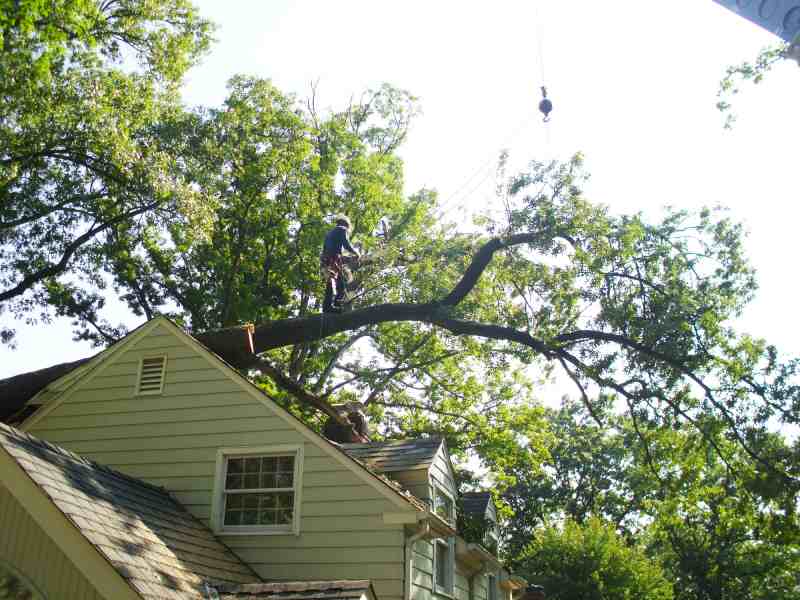As hard as we may try, it is impossible to control Mother Nature. No matter why trees fall – whether due to a powerful storm, decay, or neglect – it can cause serious damage to you and your home. In fact, we have already responded to a number of emergencies this year to remove fallen trees from homes. Thankfully, there are some steps we can take to minimize the probability of our trees falling. Follow this guide to keep you and your home safe.
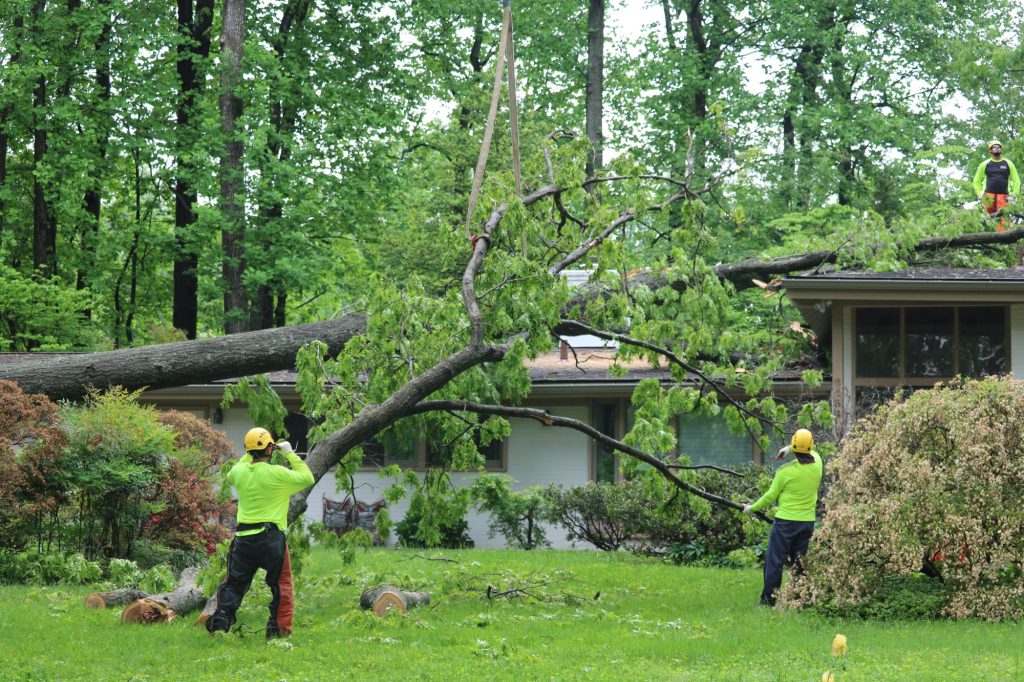
The Potential Fallout from a Fallen Tree
All it takes is one tree or limb to cause incredible damage. We have unfortunately seen trees fall on roofs, fences, driveways, cars, sheds, and children’s playgrounds. This damage can be very costly due to the premium price of emergency services, along with the costs of repairs. And the truth is, it’s not a guarantee that your insurance will cover all the damage, which means some of the cost may fall on your wallet. Aside from expensive repairs, having a tree fall on your property can be a scary and emotional event, even if no one is hurt. Many homeowners remain in fear that once one of their trees falls, others will come down too.
While it is impossible to know exactly if a tree will fall, there are common reasons for this occurring, and many of them are preventable!
An ounce of prevention is worth a pound of cure.
Benjamin Franklin
The Most Common Reasons Behind Fallen Trees

If you’ve seen one tree toppled by high winds while a similar tree in the same yard weathered the storm with no damage, you may be asking yourself, why do trees fall?
In the case of uprooted trees, you can almost always blame it on the roots. A tree’s root system serves multiple purposes. Its most important jobs are to absorb water and nutrients from the soil and to act as the tree’s anchor, keeping the tree straight and stable.
If your tree has root issues, storms with heavy rain and high winds may uproot your tree. So, what causes root issues?
The Roots of the Matter
Root Rot:
Root rot is a type of fungus that typically occurs when there is too much moisture in the root zone. Common types of root rot include Armillaria and Phytophthora. These fungi rot the roots of the tree which greatly increases its risk of uprooting during a storm with high winds.
Root Damage From Construction

Roots typically extend 1-2.5 times the radius of the branches (the trees’ canopy) When construction is being performed within this vicinity roots can be easily damaged. In some cases, contractors cut roots so they do not interfere with the project they are installing. When contractors install driveways and sidewalks in a tree’s critical root zone, they compact the soil and over time smother the tree roots. When the root system is struggling from construction damage and compaction it’s much more likely to give way and fall during heavy rain and high winds.
Shallow Roots
When trees are planted in hard, compacted soils root systems may struggle to penetrate the ground and form roots at the correct depth. Trees can also develop shallow roots when they are watered incorrectly. Short, frequent watering only allows water to enter the top part of the soil. This requires your tree to grow its roots shallower than it should. Shallow roots do not anchor trees as well as roots that grow at the appropriate depth and can lead to a higher risk of uprooting.
Unestablished Root System
When it comes to newly planted trees, it can take a few years to establish a stable root system. Since these root systems are what keep trees from falling, newly planted trees are more likely to topple or get damaged during high winds.
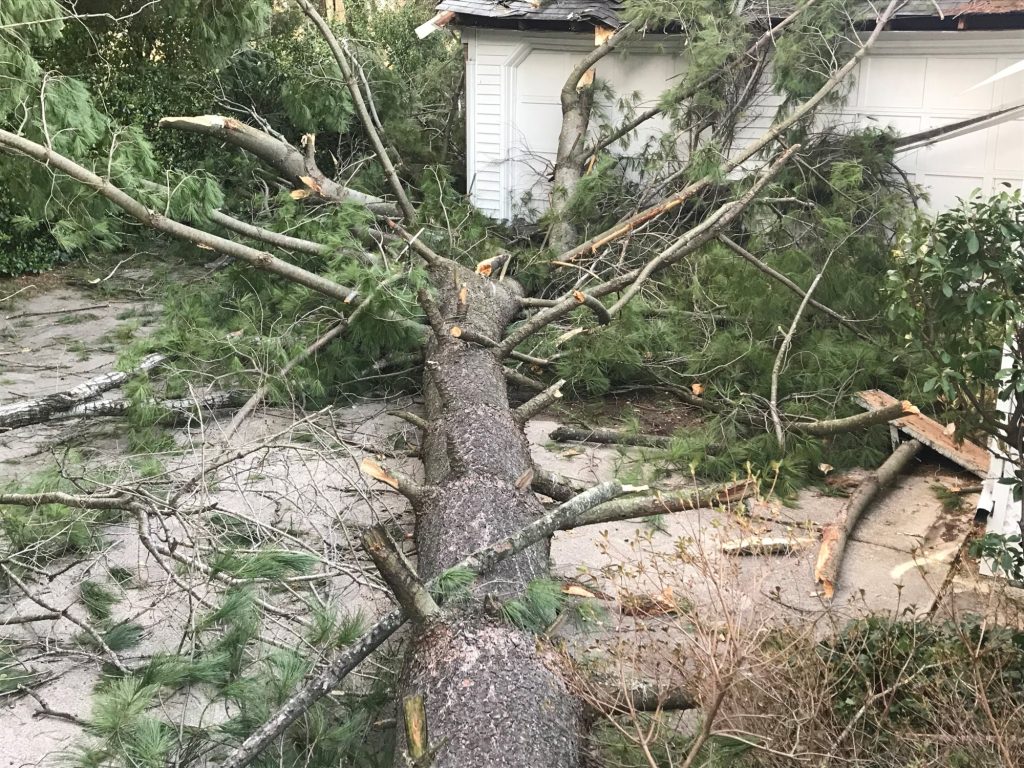
Storm Damage and the Most Vulnerable Tree Types
Unfortunately, no tree is 100% safe from falling. If winds and rain start to get excessive, as you see during major hurricanes and tornados, even the healthiest trees are at risk.
Trees Most Likely To Fall In Wind
The tree species most likely to fall in the wind tend to be willow white spruce, cedar, and white pine. These species also tend to live in wetter soils which can also contribute to a tree’s likelihood of falling. Taller trees with large canopies are also more susceptible to a phenomenon known as “windthrow” where the tree’s trunk and its “sail area”/canopy acts as a lever that uproots the tree.
Know that we’ve answered the question, why do trees fall? We can learn how to spot the warning signs and reduce our tree’s risk of falling, splitting, and dropping limbs.
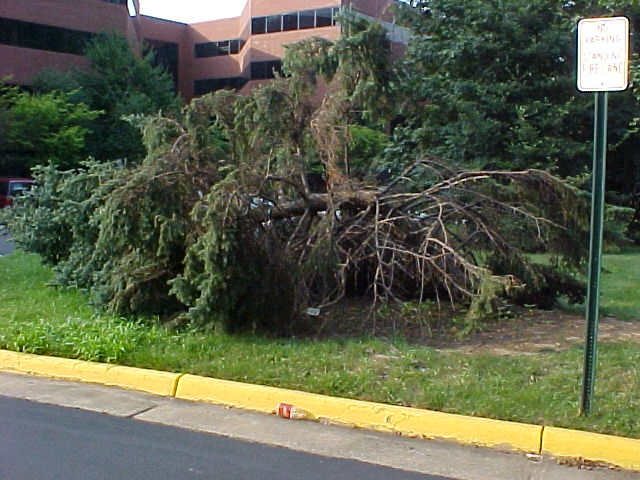
How to Reduce the Risk Of Uprooted Trees
Water Your Trees Slowly For Long Periods Of Time: Frequently watering your trees for a short amount of time will teach your tree’s roots to grow near the surface. Instead, if you water slowly for long periods less frequently, the water will be able to penetrate deeper into the soil. This allows your tree’s roots to grow at the correct depth.
The best way to water is to turn your hose onto a dribble, put your hose somewhere in the critical root zone, and leave it for 2-3 hours. Move the hose to a different spot in the critical root zone and leave for 2-3 hours. Repeat this step 1-3 times. This should be done 1-2 times a week.
But Don’t Over Water: Overwatering can cause root rot which in turn can make your tree susceptible to falling. You want the soil around your tree to be moist but not soaking. If you can make a mud ball out of the soil, you’ve overwatered your tree.
Don’t Over Mulch: Mulching is great for your tree; however, over-mulching can cause your tree to develop shallow roots and may even suffocate your roots. Aim for 2-4 inches of mulch spread evenly and not touching the base of the tree.

Get A Root Collar Excavation: If you think your tree may have root issues, invest in a root collar excavation. This is where you’re tree’s critical root zone is opened up with a high-velocity air tool. Once exposed the Arborist can look for root issues and strategically fix them before they worsen or cause your tree to fall.
How to Reduce Risks Of Falling Limbs & Splitting Trees
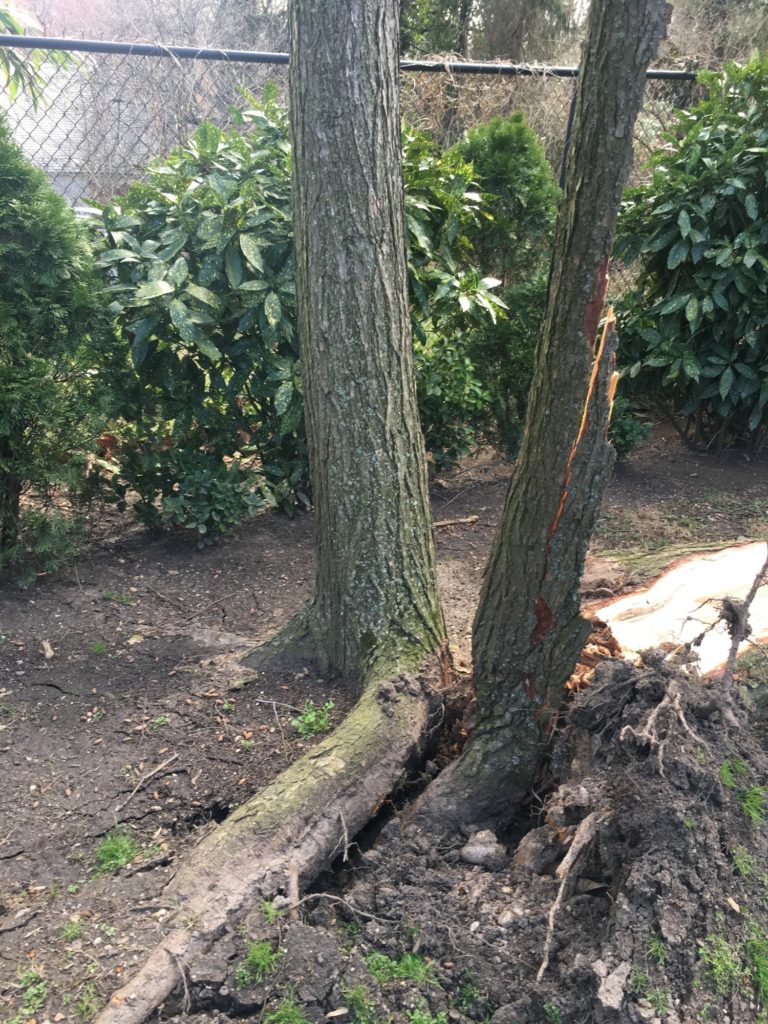
Prune For Structure: Pruning your trees regularly before they are fully mature (during the first 2-10 years) is extremely important. When you do this, you can spot structural issues when they are first developing. This allows Certified Arborists to strategically prune or alter the tree to correct those structural issues before they become big problems later.
Remove Dead/Weak Limbs: If a limb is leafless when it should be in bloom it’s a hint that the limb is dead/dying. These limbs are the ones that tend to come down in storms. Also, look for limbs that have two equal size arms branching off of the trunk (Y-shaped). The point at which these branches connect may be weak and could break off during wind and rain storms.
Consult with an RTEC arborist today!
Now that we’ve answered the question, “Why do trees fall?” take the right precautions to keep your tree structurally healthy. Our certified arborists can help you determine the best course of action to keep you and your property safe.
